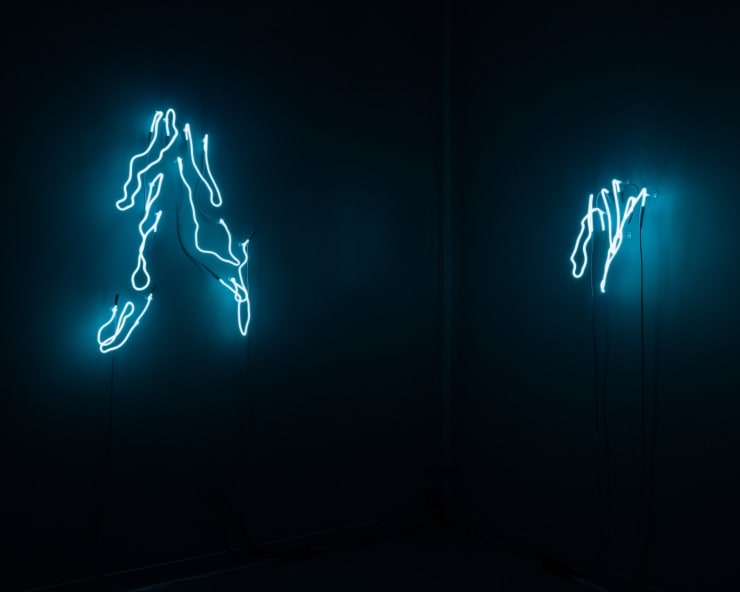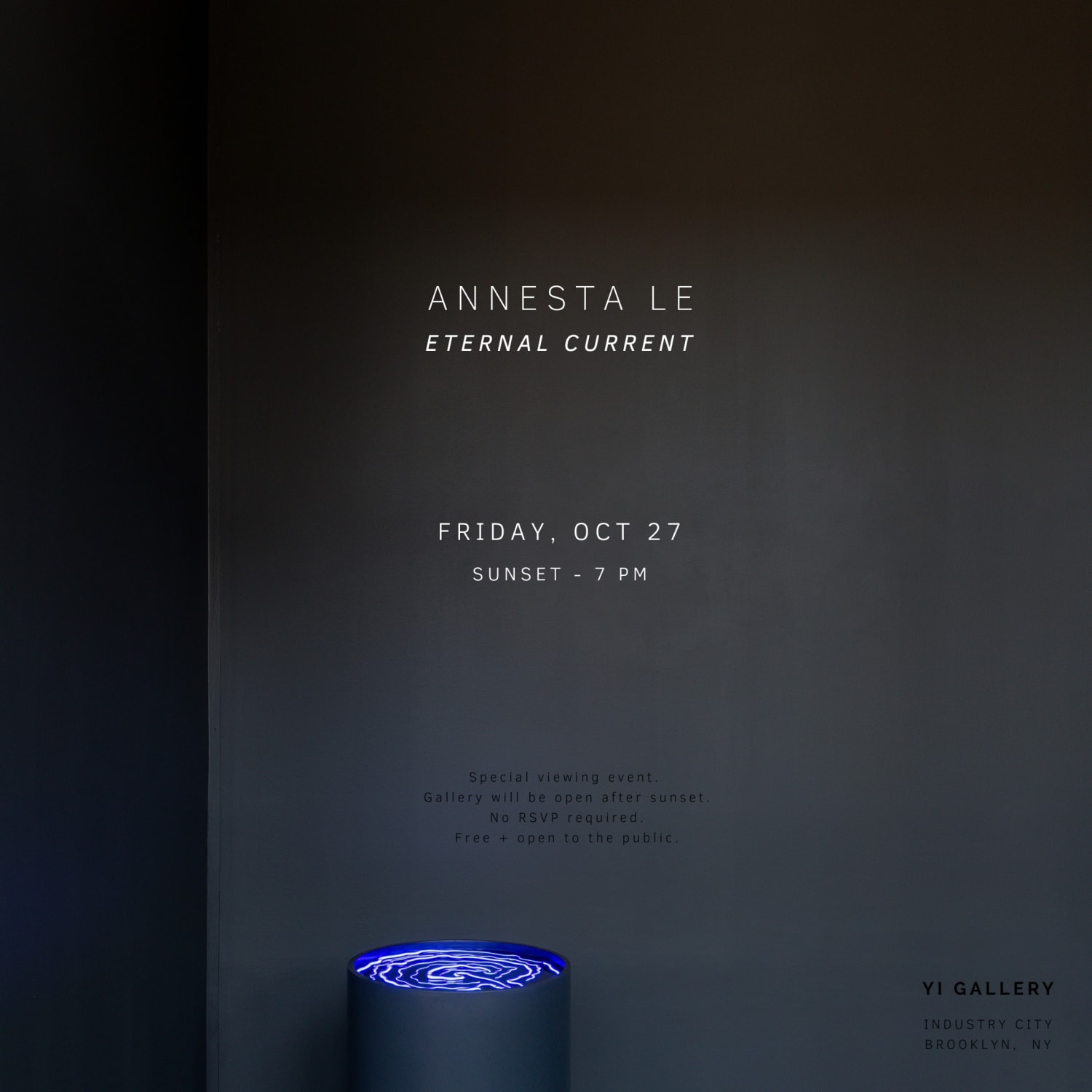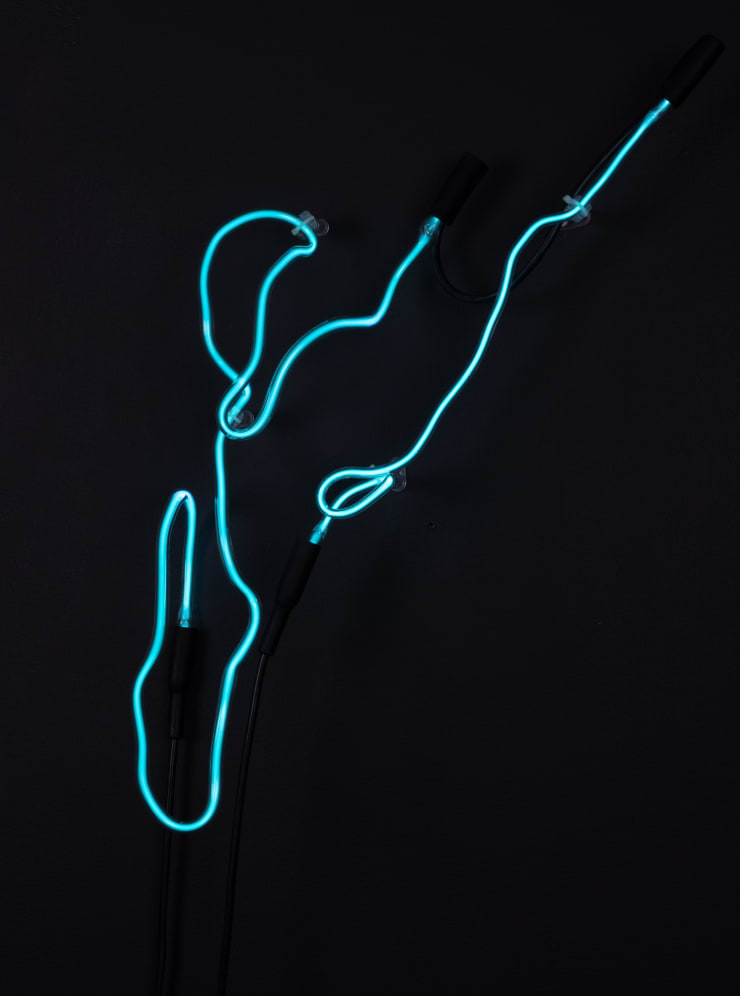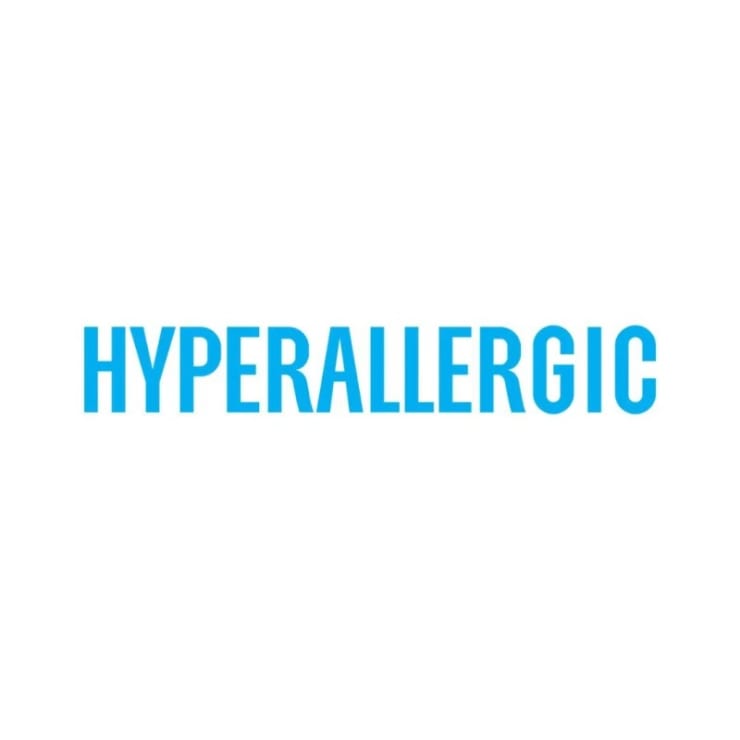"Within the soul, from the primordial beginning,
there has been a desire for light
and an irrepressible urge to rise out of the primal darkness."
— C.G. Jung, Memories, Dreams and Reflections
Yi Gallery is proud to present Eternal Current, a solo exhibition by Annesta Le. This new suite of neon and canvas work focuses on the symbolism of liquid and centers around the artist’s interest in the study of dreams. This marks the Brooklyn-based artist’s second solo exhibition with the gallery. An artist reception will take place from 3 - 6 pm on Saturday, September 16. With the opening event, we celebrate the gallery’s two years of full-time programming at our Industry City location.
It started with a dream.
Fluids were flowing from giant vases inside an all-white cathedral. Organic flowing lines, teardrops and water began to appear in Annesta Le’s drawings. The way she bent her neon glass work also started to evolve. Responding to the powerful manifestation of liquid in her compositions, Le takes a psychological approach and examines the symbols and objects in her dreams. Le sees the dream symbols as messages from the unconscious. Dreams are natural expressions of human imagination and use the most straightforward language at our disposal: mythic narratives. To Le, these symbols that come up in our lives speak of our fears and desires - powerful tools for self-discovery.
The neon sculptures in the Fluid Form (2023) series evoke bodies of water and the currents of flowing energy. Water is often associated with the concept of the collective unconscious and the hidden depths of the human psyche. The symbolism of flooding evokes the idea of unexplored emotions, memories or aspects of the self that surge to the surface, inviting exploration and understanding of the unconscious realms. Currents represent the dynamic, continuous movement of water. Symbolizing the passage of time and the constant flow of energy, currents are a reminder that life is in a state of flux. “Currents also symbolize the importance of emotional and spiritual fluidity, allowing us to navigate and embrace the depths of our being,” the artist emphasizes. “Currents represent the ebb and flow of our emotional states, the depth and power of our feelings and the free expression of our inner selves.” Sculpting with light, Le’s compositions emerge and flow into an undulating, biomorphic dance. They are rife with allusions to the feminine: baby’s milk and feminine body fluids during arousal and periods. Le believes that the feminine is linked to the flood of abundance and to nature's cycle of birth and rebirth.
Le has chosen black for the gallery walls and floor to illuminate the darkness of the mysterious dreamworld. Symbols in our dreams are sometimes hidden and difficult to decipher. Enveloped by this dark expanse, the light sculptures appear fluid in their essence. Made in a glass shop in Brooklyn, the neon glass is hand blown by Le, whose body movements determine the forms. An intensely intuitive process–heating and bending the glass tubes into unique shapes and breathing air into the tubes by mouth–conveys a feeling intrinsic to Le’s aesthetic sensibility: the delicate balance between life and play. Even though neon is solidly located in a twentieth-century landscape of consumption, the process gestures towards the medieval practice of alchemy—the transmutation of gas and metal through flame. The density of meaning behind neon—social, psychological, historical and mystical—adds an aspect of tension to Le’s sculptures. The excess of content is at odds with the simplicity of the final form. The transformation of elemental materials and the sheer physicality of production imbue the work with a bodily and psychic presence. “It’s about life and playfulness, showing life-giving forces in a dark world,” she has stated.
Towards the end of a narrow corridor in the gallery, neon light meets natural light. Beacon (2023), a tall, linear sculpture divides spatial darkness. With two diagonal ends sitting neatly, electrical current flows inside the phosphor, mineral-coated glass. Beacon quietly illuminates a transitional corner in the space, highlighting a poetic and alchemical dialogue among light, air and architecture. Its warm presence conveys the transformative power of movement and the potential for renewal, rewarding the viewer with a gentle glow that resembles the transient state of drifting in and out of a dream.
Flowing(2023), one of the artist’s largest canvas works to date, echoes her rigorous process of bending glass. Prompted by the exploration of the dream symbols, the work unfolds a psychic landscape through the action of repetitive drawing, adopting the method of “automatic” drawing and the automatism as a way of accessing the unconscious imagery.
In Labyrinth(2023), Le explores a universal symbol through sculptural form. Using three elements–light, water and a labyrinth–the work is a metaphor of the path we take in life in search of self-discovery. Light embodies the spirit, creative force and cosmic energy. Water is connected to emotions and the subconscious mind. Fluid, adaptable and capable of flowing through obstacles, water is malleable and, thus, a symbol of flexibility, resilience and the ability to navigate life's challenges with ease. The labyrinth's intricate pathways reflect the meandering nature of water as it navigates its course, creating a symbolic connection between the two. Both water and a labyrinth evoke a sense of flow and movement. A Cretan labyrinth is a type of maze that originated on Greece’s island of Crete. In Greek mythology, it was said to be built by the craftsman Daedalus for King Minos of Crete to contain the monstrous Minotaur. The ancient Labyrinth motif was an elaborate, confusing structure designed to be difficult to navigate with many twists, turns and dead ends. In modern usage, a Cretan labyrinth is a maze-like pattern that is often used as a symbol of the winding, complex path that one must follow in order to reach the center and achieve enlightenment or understanding. Water's reflective surface can mirror its surroundings, offering a metaphorical space for contemplation and self-reflection. Water also represents boundlessness, as it has no fixed shape or defined borders. Similarly, a labyrinth can be seen as a metaphorical journey without clear boundaries, encouraging exploration and discovery. The combination of water and a labyrinth evokes a sense of limitless possibilities, inviting individuals to explore the depths of their emotions, thoughts and experiences.
Annesta Le is a multimedia artist living and working in Brooklyn, NY. Le left the University of Texas, where she was studying computer science, and, following intensive work with a Jungian psychoanalyst and a life-altering visit to the Brazilian rainforest, she shifted from occasional drawing and painting at home to a rigorous studio practice. As the daughter of Vietnamese immigrants, the work of positioning herself vis a vis society and finding ways to translate her inner life is an ongoing process reflected in her work in ways that are—like any human subject—constantly undergoing change. Her work can be divided into two very different and occasionally overlapping practices: sculpting in illuminated neon and drawing on paper and canvas. Le has exhibited in New York, Chicago and Turin, among other cities. She is the recipient of a grant from the Peter S. Reed Foundation and has been featured in publications such as Slow + Sustain magazine, Art Master, Vogue and Fortuna magazine, Japan.
Based in Brooklyn, Yi Gallery produces five exhibitions annually. Guided by the commitment to provide an open and well-informed platform for conceptually rigorous and formally inventive projects, the poetic and critical program prioritizes context and discovery. Informed by the founder’s international experience and interest in interdisciplinary inquiries, Yi Gallery aims to present a true reflection of the vitality and diversity of today’s contemporary practices. Through building a nurturing support structure for a focused roster of emerging artists, the aesthetically-oriented program fosters ongoing dialogue between local and international artists. The gallery is situated inside Industry City, on the Brooklyn waterfront. Prior to opening the Industry City space in October 2021, Yi Gallery operated as an itinerant curatorial project since 2018 and ran a collaborative space in Bushwick from 2020 to 2021.
For additional information, please contact Cecilia Zhang Jalboukh at cecilia@gallery-yi.com or +1 (917) 617–6561.
254 36th Street, Suite B634, Brooklyn, NY 11232 Industry City, Building 2


















